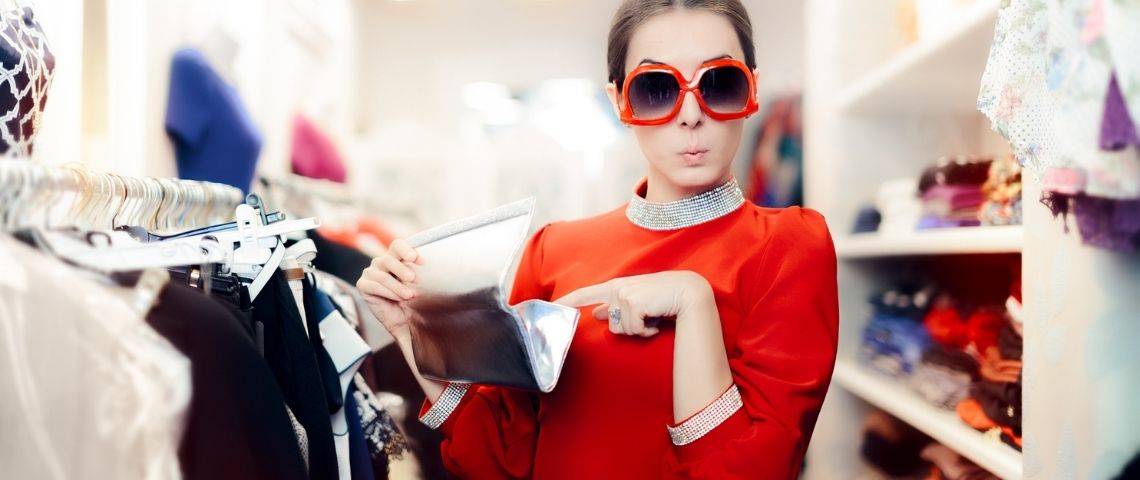
Eve Delacroix-Bastien is a lecturer at the University of Paris-Dauphine. She is also responsible for the Master 2 in Marketing Communication. Her research focuses on vulnerable consumers and, more generally, on the social impact of marketing. With Florence Benoît-Moreau and Béatrice Parguel, she published in 2018 The benefits of the collaborative economy for financially constrained consumers: the case of second-hand buying/selling sites. For us, she analyzes the links between second hand and social class.
In 2020, is the explosion in the number of people in precarious situations contributing to the increase in demand for second-hand fashion items?
EVA DELACROIX-BASTIEN: The main motivation for a second-hand purchase is indeed the price, but it does not seem to me that this type of consumption concerns the very working class. Second hand does not make them dream! On the contrary, buying second hand means being assimilated to a “social case”. People with limited purchasing power therefore prefer to buy new and frequent stores like Kiabi or Gémo.
Today, hasn’t second-hand consumption lost its stigma and become more desirable?
E. D.-B.: This is the case for the upper classes, for whom second-hand consumption has become normalized. But it has not been democratized to the bottom of the social pyramid, and there are still many cultural brakes among the poorest. On the other hand, the fact that retailers like Kiabi or Auchan are promoting second-hand channels is interesting. Second-hand consumption could thus be legitimized and institutionalized among these most popular categories.
What are the cultural obstacles that you mention?
E. D-B.: When we buy second-hand, we sometimes make mistakes, choose the wrong size or are disappointed by the quality of the product. When you are financially constrained, it’s a risk, and you can’t afford these mistakes. Buying new therefore corresponds to a strategy which is to maximize one’s chances of not making mistakes. At the end of the day, the quality/price ratio is more advantageous in the new home circuit.
Some people take advantage of this second-hand fashion boom to set up, sometimes very young, small resale businesses. Have these practices been adopted by the poorest people?
E. D-B.: They are the work of more privileged categories of the population. This kind of business concerns young people who have enough initial capital to invest. It is also necessary to have an important cultural capital to know how to identify which piece can give rise to an added value. And also an important financial comfort to be able to be satisfied not to resell it. In the same way, some wealthy mothers buy high-end clothes for their children because they know that they have a resale value. The final cost price will be equivalent to the lower end of the market, but this strategy requires significant initial savings. Conversely, the poorest are in a logic of daily survival. The working classes will instead use Facebook Marketplace, favoring local sales groups. When you buy on Marketplace, you have access to the seller’s Facebook profile, so you can select people you identify with and make small checks. Here again, it is a matter of maximizing your chances of not being ripped off.
Is it on Facebook Marketplace, finally, that the “economy of scavenging” that was very characteristic of working-class environments is reactivated?
E. D-B.: During a survey I conducted with women who had set up small businesses on Facebook Marketplace, I remember one of them who was in a very precarious situation: she was receiving the RSA, with three children from three different fathers. One year, she decided to invest the
One year, she decided to invest the Christmas bonus she received from the CAF, which amounted to 150 euros, to buy a stock of small pieces of jewelry and resell them on Marketplace. She managed to double her initial investment by reselling with a margin. For her, the benefit was economic, with an additional income, but also symbolic, since this young woman was able to regain a power to act, a form of control over her life.
What about second-hand stores? Do they allow a form of social mix?
E. D-B.: I have reservations about the idea of social mixing. The frequentation of a charity shop will be very different depending on whether it is located in the Marais or in Hénin-Beaumont. The outlets are located in catchment areas that are still very marked sociologically and economically. And, once again, buying second-hand is associated with a form of stigmatization for the working classes, who above all aspire to consume like everyone else.
